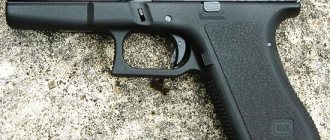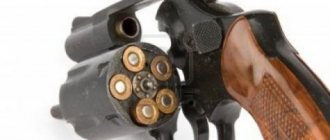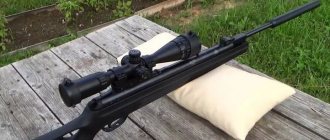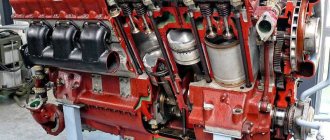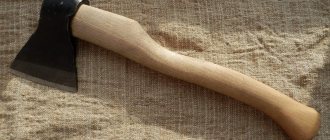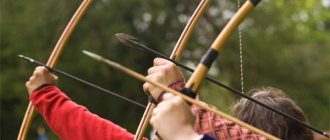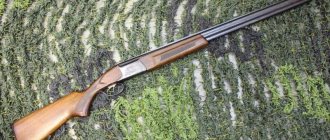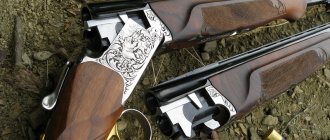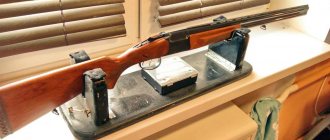The Su-47 Berkut forward-swept wing aircraft gives the impression of a futuristic machine that flies contrary to the laws of physics. Of course, all this seems only at first glance. The unconventional wing model fuels interest in the aircraft. And its maneuverability delights specialists and pilots.
Despite the fact that the Su-47 project has experienced many difficulties, Russia is one of the few countries that has brought the idea of a forward-swept wing to its logical conclusion. This work was labor-intensive and costly for the budget, but all the work was worthwhile. Perhaps for this reason, the Su-47 "Berkut" is a source of pride for designers and military personnel and repeatedly appears as a decoration at air shows.
History of creation
The beginning of the life of the Su-47 project is considered to be the 80s of the 20th century. Even then, the top leadership of the USSR was concerned with the speedy creation of a fundamentally new fighter, capable of competing with Western counterparts for many years to come.
The starting point for the work was the Su-27, which, along with the Mig-29, was just entering service in the late 70s and early 80s and was preparing to become the main striking power of the USSR in the sky. And almost immediately management began to take steps to improve projects. It is worth noting that overseas opponents carried out similar developments simultaneously.
The first designation that the new aircraft received was Su-37. Only much later it was renamed Su-47. In fact, one can call the fighter a continuation of the Su-32 with an identical airframe structure and the ability to carry weapons like the Su-33. The management planned to launch the new Su-47 into production already in 1993.
But the difficult period of time that affected the Soviet Union, and then its successor - Russia - will leave its mark on many promising developments in the military sphere. The work on creating the Su-47 was no exception. In 1988, development was almost completely curtailed until better times. Only the leadership of the Navy helped, which requested a design for an aircraft for aircraft carriers. This is how the Su-27KM (ship-modified) appeared. And work on it later formed the basis of the Su-47.
The collapse of a huge power dealt an irreparable economic blow to all spheres of life.
Sukhoi Design Bureau supported the Su-47 project at its own expense. For this reason, the designers had only one testing machine at their disposal.
Fortunately, such an interesting project was brought to fruition, and in 1997 the newest Su-47, which received the nickname “Berkut” (for its ability to quickly change direction or angle of attack due to its maneuverability). Society had high hopes for him, because at that time it was difficult for Russia to surprise with new projects.
Only much later did the military leadership make it clear that the Su-47 was just an experiment in the sky, and should never have entered service en masse. This explains the fact that from the moment of its first flight to the present day, the Berkut has not become a production aircraft of the Russian Air Force.
What are the advantages of a composite wing?
When developing a new project, the designers were given the main goal - to create a new 5th generation fighter, which will be equipped with a more rigid wing axis. The desired result could only be achieved by creating a composite wing and redirecting its reinforcing threads. Among the main advantages of the new layout were the following:
- increasing the aerodynamics of air transport maneuverability, especially at medium speeds;
- an increase in lifting force, since the swept wing of the aircraft had a greater lifting capacity, by about 35%;
- increased flight range, in particular in subsonic mode, due to reduced resistance;
- improved controllability and efficiency of the wing mechanism;
- reduction in stall speed several times, which improved anti-spin characteristics;
- the emergence of the opportunity to better design the internal cargo compartments due to a general increase in the volume of the airliner.
Design
The Su-47 fighter has received some unique design features that set it apart from the classical concept of the layout of a modern fighter aircraft.
A characteristic feature of the aircraft is the forward-swept wing.
Moreover, the wing itself has a forward direction and is smoothly connected to the fuselage, which is a solid supporting structure (this is a feature of fighter aircraft), but its consoles are made with a forward sweep.
Composite materials are used in the production of the Su-47. Thus, the wing consists of 90% composite and only 10% metal alloys. The fuselage is created using titanium and aluminum. This approach makes the car lighter and makes it modern. However, there are known tests of American fighters (also made of composites), which have proven that such materials are seriously inferior in strength to metals, which makes aircraft less reliable.
The Berkut is assembled using a unique technology, when elements of the fuselage or tail are cast as accurately as possible in a flat form, and then they are given the desired curvature and shape. This allows you to ensure the highest quality joining of parts and use fewer rivets. The weight of the aircraft is reduced by 20-25% only due to this technology, and the service life of the skin is 2-3 times higher than that of an all-metal skin.
The aircraft layout is known as a longitudinal integral triplane. The front empennage is a trapezoidal console with a sweep angle of about 50 degrees and a total span of 3.5 meters. A special feature of the PGO is the ability of the entire console to rotate. For control, ailerons and flaperons are installed on the main wing.
The tail, like the front one, has the ability to rotate completely.
The tail fins are similar in design to the Su-27, but smaller (which gives more “invisibility” to radars) and have a camber of 75 degrees relative to each other.
The fuselage has a distinct oval cross-section. On the sides, at the junction with the wing, there are air intakes. The cockpit is located in the front part, and the fuselage itself in the bow has received a noticeable flattening with protruding ribs on both sides.
The cockpit of the vehicle's sole pilot is identical in size to its predecessor, the Su-27. But there are some small features of its own. Thus, the Su-47 Berkut has improved visibility and reduced dispersion area, but a new ejection system was required.
The location of the pilot's seat required new ejection calculations. The Su-47 is positioned at an angle of 30 degrees. This reduces pilot workload at high speeds. At the moment this is the K-36DM model. There were plans to install an even more modern pilot life-saving system with the ability to leave the plane at low altitudes, but this has not yet been applied.
The aircraft's landing gear is tricycle. The two rear pillars have one wheel each and are retracted forward and rotated behind the air intakes. Two wheels of smaller diameter are placed on the front chassis. The stand is also assembled forward with a turn, hiding under the cockpit.
The Su-47 was initially equipped with D-30F6 engines with a thrust of 15,600 kgf (the same as on the Mig-31).
But especially for all fifth-generation aircraft in Russia, a new generation of power plants is being developed - AL-41F (with thrust vector control, plasma ignition and even the ability to operate in the event of failure of all electronics on the aircraft), which are planned to be installed on a series of Su-47 fighters, including number.
Not much is known about the Berkut's on-board equipment due to the high secrecy of information. However, it is clear that the military industry supplied its best developments for the fighter.
It is reliably known that the Su-47 is equipped with:
- navigation systems with laser gyroscopes and the ability to navigate by satellite;
- radar antennas were probably intended to be located in all directions of the aircraft (nose, tail, fins and wings) to provide maximum visibility to the pilot;
- optical location station in the nose of the fighter;
- control is organized using a strain gauge lever and a side low-throw handle;
- the radar station on board allows you to detect targets at a distance of 245 kilometers from the aircraft, guide up to 24 enemy targets and hit 8 of them at once.
The Berkut is considered an experimental aircraft and therefore does not carry weapons. But since it is assembled on the basis of the Su-27, Su-32 and Su-33, its possible arsenal can be impressive. Firstly, the Su-47 has compartments for missiles and bombs. It is possible to install suspended weapons externally, but this measure will increase the visibility of the fighter to enemy radar.
The aircraft was planned to be equipped with all types of missiles: short, medium, long and ultra-long range. It is assumed that the Su-47 can successfully hit targets at a distance of up to 400 kilometers. For close combat, the fighter can use the GSh-301 30 mm cannon.
The video is devoted to the issue of wing sweep on airplanes. What is the difference between forward and backward swept wings? Why are swept wings needed at all? What are the pros and cons of forward and backward swept wings? Why are aircraft with forward-swept wings still not mass-produced and accepted into service? We will look at these and other questions in our video today.
Many myths and prejudices have formed around forward sweep. In order to evaluate all the pros and cons, you will first have to understand at least in general terms why any sweep of an aircraft wing is needed at all.
All supersonic aircraft will have swept wings. Today the wings have a straight sweep. Backsweep is used only on experimental vehicles. But first things first. First, a little “theory” to understand why modern aircraft, in principle, need swept wings and why they are not made straight, like small-engine aircraft.
Why are wings swept?
During flight, the wing of an airplane is primarily affected by air resistance (which is inversely proportional to the square of the speed of the machine). However, when reaching a speed of 450 km/h, wave resistance of the air is also added to the usual resistance.
Wave resistance of air is the result of energy expenditure for the formation of a shock wave during supersonic gas flow. Even at subsonic airplane speeds, some air currents around the machine are already moving at supersonic speeds (more than 1,220 km/h). This resonance causes wave resistance, which gradually increases as the aircraft speed approaches the speed of sound - 1,220 km/h. In this case, wave drag begins to decline as soon as the aircraft begins to significantly exceed the speed of sound.
Wave drag not only prevents the aircraft from moving, it poses a mortal danger to it. The special shape of the vehicle’s fuselage helps cope with resistance, and the swept wing is the most important element in this regard. However, it also has one serious drawback. A straight swept wing reduces the maneuverability of the aircraft and increases the complexity of control, increasing the risk of the aircraft falling into a tailspin. Partially the listed problems are solved through a variety of “additional means,” for example, by installing special combs.
Advantages and disadvantages of forward sweep.
The forward sweep is devoid of a significant part of the disadvantages that are generated by the forward sweep of the wing. In addition, the reverse shape of the wings reduces the amount of fuel consumed, improves maneuverability by 15%, reduces the vehicle's acceleration distance during takeoff by almost 34% and the vehicle's braking distance during landing by 33%, increases the flight range, increases the stability of the aircraft, and reduces the risk of the vehicle falling into corkscrew. Finally, forward sweep reduces the turning radius by 14%.
The problem with forward sweep is that such wings are very fragile. Until the end of the 1970s, all of the above existed only on paper, with the exception of experimental aircraft of the Third Reich, since it was not possible to create a sufficiently strong forward-swept wing without a critical increase in the mass of the part. This only changed as a result of the advent of modern composite materials in the early 1980s.
The leaders in the development of forward sweep were the American company Grumman and the Soviet Sukhoi Design Bureau. The Americans created their famous X-29, which showed impressive results. Alas, the designers were faced with a new unsolvable problem - strong shaking of the aircraft during
flight time. As a result, the project was closed by the Pentagon, and the tender for the production of new generation aircraft for the US Air Force went to another company.
Soviet designers tried to solve the shaking problem by creating their S-37 Berkut. However, at first the tests of the machine were prevented by the collapse of the Soviet Union, then the project was slightly
not closed. Flight tests resumed only in 1997.
Unfortunately, Soviet and Russian designers also made mistakes. The proposed solution did not allow aircraft with forward-swept wings to be freed from shaking. It is for this reason that despite its many advantages, this form of design is still not used in the Air Force.
Why did the Tu-22 aircraft receive the nickname “Cannibal”?
Flight performance
Although similar projects with forward-swept wing aircraft were carried out in many countries, they were sooner or later abandoned. Only the Su-47 entered production, albeit not into serial production. Testers, designers and experts have rated and rate the Berkut very highly, noting its maneuverability, stealth and ability to carry a large combat load.
| Su-47 "Berkut" | Rafale | F-22 Raptor | |
| Dimensions (length/wingspan/height) | 22.6 m. / 16.7 m. / 6.4 m. | 15.30 m./ 10.9 m./ 5.3 m. | 18.9 m./ 13.5 m./ 5.09 m. |
| Wing area | 56 sq.m. | 45.7 sq.m. | 78 sq.m. |
| Weight (normal at takeoff/maximum) | 25.6 t./ 34 t. | 14.7 t. / 24.5 t. | 29.2 t / 38 t. |
| Maximum speed (at the ground/at altitude) | 1400 km/h / 2200 km/h | 1350 km/h / 1900 km/h | 1490 km/h / 2410 km/h |
| Fuel quantity | 12 t. | 4.7 t. | 8.2 t. |
| Maximum flight | At subsonic – 4000 km, at supersonic 1600 km | 1800 km | 2960 km. |
| Ceiling | 18-20 km | 15.2 km | 20 km. |
| Engines | TRDDF 2x15,600 kgf | TRDDF 2x7,500 kgf | TRDDF 2x15.876 kgf |
| Run length | 90 m. | 400 m. | 250-450 m. |
Since the Su-47 was conceived as a fighter, it can be compared with similar aircraft from other countries that are Russia's competitors in military terms. Thus, the best representatives of Germany (Typhoon) or France (Dassault Rafale) can compete with the Su-47 in maneuverability, but are inferior in combat load and destruction range. Consequently, they lose significantly in a possible battle.
But the American F-22, the only fifth-generation aircraft in the world, could have turned out to be a worthy competitor, if not for one “but”. Its cost was so enormous (about 70 billion dollars are known to have been spent on just 187 cars) that production was suspended.
Production and interesting facts
The assembly process of the Su-47 Berkut is characterized by large financial expenses due to the fact that the aircraft has not been put into mass production. Since the project remains secret today (there is not even complete information about all the equipment used on board), it is not possible to name the exact number of assembled vehicles. However, it is clear that Su-47 units are in service today.
Assembly is carried out at the Sukhoi design bureau and at the Irkutsk Aircraft Plant; some components are produced by related enterprises from the military sphere.
Despite the fact that the creation and further operation of the Su-47 Berkut were full of difficulties, this fighter is loved by pilots, designers and people passionate about aviation. This love generates close attention to the aircraft at exhibitions, shows, and during tests. Perhaps for this reason, interesting facts have already appeared about an aircraft with such a short service life.
For example, for a long time the design of the new fighter itself was kept in the strictest confidence. But one day, random photographs from a meeting of the military council appeared in the press, where on the table of the top commanders there was... a model of an aircraft with a forward-swept wing. This little detail was enough for foreign designers to draw up a design for a secret fighter. Despite the constant denials of such developments in the USSR Design Bureau by the country's leadership, after the release of the aircraft it became clear that the foreign engineers were not mistaken.
Fighters with forward-swept wings were developed not only in the USSR. Some projects abroad even reached final tests. But apart from the Su-47 Berkut, not a single other fighter has become a promising development. On the contrary, work was mainly curtailed, and attention was paid to universal and easy-to-manufacture aircraft.
On the basis of the Su-47, Russian designers tested the latest achievements of the military-industrial complex.
Firstly, the aircraft itself received advanced avionics, but testing of new technologies also made it possible to advance the creation of the next generation of fighters - the T-50.
The Su-47 Berkut is similar in characteristics to the Stealth project. The Russian fighter's technology also allows it to remain undetected by radar. But the focus on the classic design of the fighter fuselage and the use of traditional design moves made the Russian aircraft much cheaper.
SR-10 with reverse wing: unique capabilities of the younger "Berkut"
A short takeoff run, separation from the runway - and the small red plane begins a sharp climb. The announcer's voice on the broadcast reports that a new SR-10 training aircraft has taken to the skies of the MAKS aerospace salon in Zhukovsky near Moscow.
If it were not for the red coloring of the fuselage, the plane could easily pass for the Su-47 Berkut fighter - the first combat vehicle that could have forward-swept wings. The first SR-10s are expected to join the Russian Aerospace Forces fleet by the end of next year.
SR-10 was created by the design bureau "Modern Aviation Technologies" (KB "SAT") - a private company that was previously engaged in the repair and modernization of the fleet of Czech L-39 Albatros training aircraft, which are in service with flight schools of the Russian Aerospace Forces . Their production at the Aero Vodochody plant stopped back in 1999. Actually, this fact prompted SAT specialists to create a replacement for the Czech “flying desks”.
SR-10 project manager Maxim Mironov says that the creation of the aircraft was an initiative project of the design bureau. However, the work immediately received the status of a decision of the Ministry of Defense “On the procedure for the development, mass production and supply of the SR-10.” At least 200 Albatros, purchased back in Soviet times, remain in flight schools. It is unlikely to renew their fleet due to Western sanctions against Russia. So there is virtually no alternative to the SR-10.
In concept, the SR-10 is not very different from the L-39: the most simplified design, a minimum of on-board equipment. Although the main thing is the use of a forward-swept wing. For the first time in the Russian aircraft industry, it was used on the Su-47 Berkut fighter of the Sukhoi Design Bureau. Then the developers noted the main features of such a machine: excellent aerodynamics, even at low speeds, which is typical for aircraft with forward-swept wings. Just like another advantage of machines with this arrangement is the excellent lifting force, superior to that of machines with wings of a classical design. In addition, the deployed wing provides improved handling characteristics during takeoff and landing. The likelihood of going into a tailspin is significantly reduced. This results in excellent alignment of the fuselage. Since the power elements of the wing are shifted towards the tail, and a lot of space is freed up in the central compartment for the location of ammunition.
Thanks to its innovative aerodynamic design, the SR-10 actually became a smaller copy of the Su-47 with comparable flight capabilities. For this, he was even nicknamed “Berkutenko”, by analogy with a more powerful and older car. Be that as it may, compared to the Albatros SR-10, it already has two to three times superiority in aerodynamics. Its characteristics meet the requirements for generation 4+ training vehicles, which, by the way, is a more complex and technologically advanced Yak-130. The SR-10 will be capable of performing all aerobatics with a maximum overload from plus 10 to minus 8G. The two-seater cabin, arranged in a tandem configuration, is equipped with K-36 ejection seats, which ensures the safety of the crew throughout the entire range of altitudes and piloting speeds. During the demonstration flight at MAKS-2017, the SR-10 showed a good rate of climb. Performed a turn with an angle of 80 degrees, a combat figure eight. Actually, the minimum required to master the basics of piloting a jet aircraft.
The SR-10 is equipped with an AI-25 engine similar to the Albatross, but modified. His choice was determined solely by economic considerations. A sufficiently large number of AI-25 engines have been accumulated, which makes it possible to use them in the design of a new machine without any special costs. Design Bureau SAT says that in the event of a contract with the Ministry of Defense, they are ready to offer a more advanced version of the SR-10 with the AL-55 NPO Saturn engine. It was specially created for training vehicles. Can be equipped with an afterburner and a thrust vector control system. This solution can turn the SR-10 into an aerial acrobat. The issue of installing the AL-55 on the SR-10 has already been agreed upon with the manufacturer. In this case, the characteristics of the vehicle, both in terms of flight performance and efficiency, will increase by an order of magnitude.
“SR-10 will allow us to implement a three-stage training system for VKS pilots. Now it is planned that flight school cadets will practice their primary flight training - takeoff and landing, spatial orientation - on the piston Yak-152, created by the Irkut Corporation. Then they will be transferred to the jet SR-10 and only after that - to the combat training Yak-130,” commented Vadim Kozyulin, a professor at the Academy of Military Sciences.
Today, according to him, pilot training is actually carried out on these machines, which is quite difficult, given the manufacturability of the Yak-130, and expensive. The plane has two engines, which is why the cost of one flight hour on it is significantly higher than that of the Yak-152 and SR-10.
Production of the SR-10 will be established at the Smolensk Aviation Plant. According to the head of the enterprise, Sergei Nikolsky, the plant is currently completing the modernization of production areas for the production of new aircraft. The contract with the Ministry of Defense may be finalized in the next few weeks. In this case, machine deliveries will begin within 14 months. It is planned that this will be a batch of several dozen new SR-10 training aircraft. In total, the VKS plan to replace at least 150 L-39 Albatros.
All cars will be ordered in the most simplified configuration in order to reduce the cost. According to the specialist, this is justified from the point of view of the future use of the machines - primary flight training and the acquisition by cadets of skills in piloting machines with a jet engine. However, the use of SR-10 may be much wider. Perhaps the vehicles will also be supplied to combat units to support flight training for pilots of fighters, attack aircraft and even bombers. A similar practice of using the L-39 existed in the flying units of the USSR.
Prospects
Despite the fact that the Su-47 Berkut aircraft was and remains secret, the fact that the country’s leadership does not ignore this project is clear without words. New engines and weapons are being developed for it. At its base, new technologies for the production of composite materials are being tested (for example, it became known that at 2500 km/h the shell of a fighter aircraft cannot withstand the loads and begins to collapse, so the maximum speed is deliberately limited).
One thing is certain: Berkut has not yet exhausted its resource and will certainly continue to be a platform for testing the achievements of the military-industrial complex. At the same time, it remains an effective weapon that will not get lost in a possible military conflict.
The Su-47 was supposed to become the most advanced fighter of the Soviet Union, and then Russia, but economic difficulties left their mark on its fate too.
This aircraft today serves more as a prototype of military equipment, and not as a full-fledged combat unit. Although we can be sure that in any other situation the Su-47 could have been successfully adopted and considered one of the world's best mass-produced fighters.
Su-27KM project. Forward sweep for an aircraft carrier
Scheme of the S-22 fighter, mid-80s. Drawing by Paralay.com
At one time, the experimental Su-47 Berkut aircraft became widely known. It was distinguished from other equipment by its unusual architecture with a forward-swept wing (SWS). The Sukhoi Design Bureau began studying the topic of CBS in the early eighties and even developed several projects using such a wing. The immediate predecessor of the experimental Su-47 in this context was the Su-27KM project, which proposed a carrier-based fighter with an unusual aerodynamic design.
First developments
At the turn of the seventies and eighties, our country launched a program to create a promising fighter to renew the Air Force fleet in the nineties.
Work on this topic was transferred to the Mikoyan Design Bureau, and the bureau to them. BY. Sukhoi was assigned to make other aircraft. At the beginning of 1983, M.P. became the general designer of the Sukhoi Design Bureau. Simonov. Almost immediately, he proposed to begin the proactive development of a promising fighter - without an order from the military. “For camouflage,” the project was given the working code S-22, which could be confused with the name of one of the production aircraft. V.S. was appointed chief designer. Konokhova.
At that time, Simonov and his colleagues showed great interest in WWTP. Research has shown that such a wing has significant advantages over a “regular” one, although it is more difficult to manufacture. In a number of characteristics, a fighter with CBS could be superior to the technology of the normal design.
Model of the S-32 aircraft. Photo: Testpilot.ru
As part of the S-22 project, we carried out the necessary research and prepared a complete set of working documentation. It was proposed to build a canard-type aircraft with a front horizontal tail and a CBS. The car was equipped with one engine; there was a single cabin. Take-off weight reached 22-24 tons, incl. several tons of combat load.
Project S.32
At the final design stage, it turned out that the S-22 was overly heavy.
Correcting these shortcomings required a radical redesign of the project. In this regard, work on the S-22 was stopped, and the accumulated experience was used as the basis for a new project - the S.32. Now the creation of a twin-engine aircraft with increased thrust-to-weight ratio was considered. It was proposed to preserve CBS with all its advantages, as well as use some ideas in the field of reducing radar signature. Designers led by M.A. Pogosyan considered several options for the layout and equipment of the aircraft, after which they chose the optimal one.
The S.32 airframe was generally similar to the previously developed one. The canard design received an additional rear rotating stabilizer. Above it was a pair of keels. The forward-swept wing has been preserved. The power plant now consisted of two R-79M engines or a pair of AL-41F engines under development with thrust vector control. In the latter case, it was possible to reach supersonic speed without afterburner. UVT and CBS were supposed to provide unique maneuverability.
Su-27KM in flight. Drawing Popmech.ru
Modern instrumentation of the cockpit was provided, ensuring the unloading of the pilot and the solution of all basic tasks. NPO Zvezda proposed an original ejection seat of variable geometry, which reduces the impact of overload on the pilot.
"Ship, modernized"
Initially, the S.32 was considered as a land-based aircraft.
However, by the mid-eighties, the Ministry of Defense began to show increased interest in carrier-based aircraft. OKB im. Sukhoi reacted to this with a corresponding initiative - the development of a carrier-based modification of the S.32 fighter. In 1988, a preliminary design of the promising Su-27KM fighter (“Ship, modernized”) was prepared. It was based on the S.32 project, but was positioned differently. In order not to confuse the customer with excessive novelty, it was presented as a deep modernization of the existing Su-27K (future Su-33).
The main provisions of the Su-27KM project remained the same. A glider of the “longitudinal triplane” type was proposed with a forward-swept wing, two engine compartments in the tail, etc. At the same time, measures were taken to strengthen some of the units that experience certain loads during operation on an aircraft-carrying ship. The instrumentation has been redesigned.
A fighter variant with folding wings. Drawing Popmech.ru
It was proposed to build an improved airframe from metal and composites. Metal parts were used in the power set and partly in the casing. The loaded part of the wing skin was composite. This made it possible to ensure the required structural strength, but made it difficult to place the wing folding mechanism. It had to be outside the projections of the composite parts so that they could distribute the loads in the correct way.
We have developed two methods for reducing the size of the aircraft for more dense placement in the hangar. In the first case, the folding hinges were placed in the center section and did not affect the composite part of the wing. The planes were supposed to fold up and forward and lay on the fuselage.
The second option did not use wing hinges. Instead, side-folding keels were used. Aircraft of this design, having a minimum height, could be stored on special racks in several tiers.
A power plant with two R-79M engines with UVT was transferred to the “ship” project. The possibility of outputting two jet streams through a common flat nozzle with control in the vertical plane was considered.
A flying laboratory based on the Su-27 for testing a flat nozzle. A similar unit could be used on the Su-27KM. Photo Airbase.ru
The Su-27KM project provided for the use of advanced on-board electronic equipment and weapons control systems. The aircraft was supposed to conduct dogfights or attack ground/surface targets. The weapon was planned to be carried on an external sling and in an internal compartment.
The promising aircraft was similar in size to existing models, and the maximum take-off weight reached 40 tons. With such a mass, the aircraft needed a launch catapult, but such units were not available at that time. An alternative was the so-called. ballistic takeoff from a springboard, which could only be provided by a forward-swept wing.
During a ballistic take-off, the aircraft, passing the cut of the springboard, has insufficient lifting force. By inertia, it gains a small altitude, but then drops by 10-15 m. Reaching the bottom point of this decline, the aircraft develops the required speed, and the CBS gains lift. After this, the car can confidently stay in the air and fly.
Customer solution
The preliminary design of the Su-27KM aircraft was prepared in 1988 and immediately received customer support. The research work received the necessary funding, and construction of a flight prototype was expected in the foreseeable future. However, this did not happen.
Experimental aircraft Su-47 "Berkut". Photo Airwar.ru
In May 1989, the Military-Industrial Commission under the USSR Council of Ministers decided to close a number of promising projects in all major areas. Along with other projects, the Su-27KM was cut. Work on the aircraft in the interests of the navy ceased. According to some reports, the Su-27KM project was closed in favor of creating the future two-seat Su-27KUB.
The Su-27KM project was canceled at fairly early stages, and construction of the prototype did not begin. Moreover, by May 1989, they had not even managed to build and test the necessary flying laboratories. Similar work was carried out later as part of another project.
From project to experiments
OKB im.
Sukhoi was forced to stop creating a carrier-based fighter with CBS. However, it did not abandon the promising direction as a whole. Work on the forward-swept wing continued - again in the context of land-based aviation. Already in 1989, work on the topic C.32 was continued on an initiative basis. This project was reworked taking into account the experience of developing the Su-27KM. New solutions, components and technologies have been introduced into it. At the same time, we had to abandon some overly bold and expensive decisions. At this stage, flying laboratories with one or another equipment were tested.
Carrier-based fighter Su-33. Due to the failure of the Su-27KM project, it did not receive a replacement. Photo by the Russian Ministry of Defense
Soon a new version of the S.32 project appeared, which received its own designation S-37. In 1997, an experimental aircraft of a characteristic appearance was built based on this project, and two years later a machine named “Berkut” was first shown to the general public. Subsequently, this experimental aircraft was involved in various studies, incl. during the development of a fifth generation fighter.
Predecessor and successors
Thus, the carrier-based fighter with a forward-swept wing, the Su-27KM, remained on paper, although it had a chance of reaching at least flight tests.
However, the developments on this project were not lost, they were implemented and tested in practice. Subsequently, the experimental project S-37 / Su-47, which partially replicated the Su-27KM, contributed to the emergence of a new generation of domestic fighters. However, the most interesting design solutions of the S-22, S.32, Su-27KM and Su-47 projects never reached series production and operation among the troops. The newest and most advanced Su-57 received a traditional swept wing.
